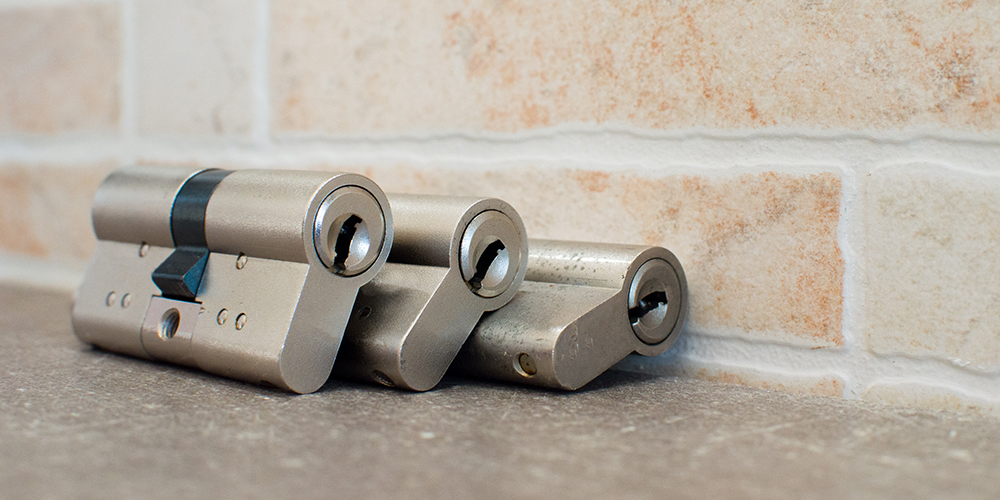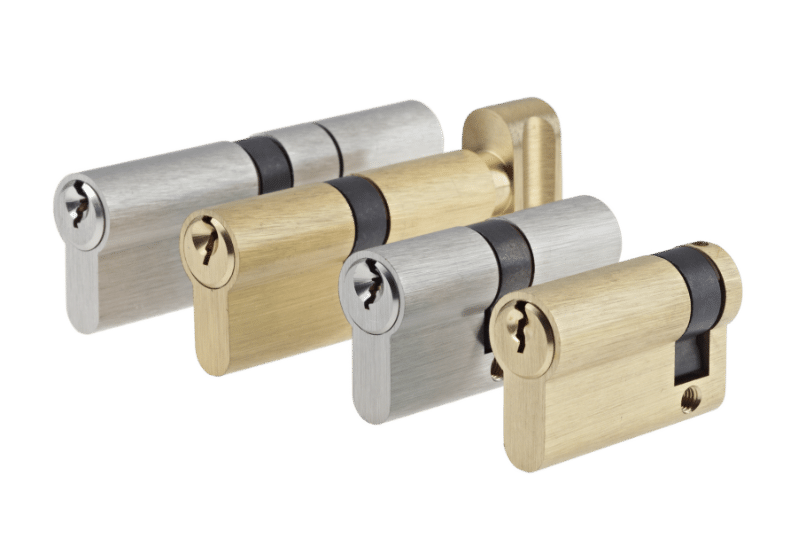Installing a euro cylinder lock can seem daunting, but with the right steps, it’s simple. These locks, popular in many homes, offer both convenience and security. Whether you’re replacing an old one or venturing into a fresh installation, a methodical approach will serve you well. In the guide ahead, we’ll walk you through the process step-by-step. By the end, you’ll have the confidence and know-how to ensure your door stands strong and secure. Ready to start?
What is euro cylinder lock?
A euro cylinder lock is a common type of door lock. You often see it in residential and commercial doors. It’s shaped like a barrel, and that’s why some call it a “barrel lock”. One main feature is the keyhole on both ends. This means you can unlock from inside or outside. These locks offer good security. But, it’s essential to get high-quality ones. Some older or cheaper models can be vulnerable. If you’re choosing one, look for anti-snap or anti-bump features. This way, you ensure better safety for your home or office. Always get a professional to install it for the best results.

How does a euro cylinder lock work?
A euro cylinder lock is like a magic box. At first glance, it looks simple, but a lot is happening inside. Let’s see step by step.
The Basic Structure: The lock has a cylindrical shape, hence its name. It fits into a larger door mechanism. The central part, where you insert the key, is the cylinder.
Inserting the Key: When you slide your key into the lock, something neat happens. The unique cuts on your key match with pins inside the lock. These pins are tiny, and they sit in pairs.
Pins and Springs: Each pin pair consists of a top and bottom pin. Springs push them down, ensuring they block the cylinder from turning.
The Perfect Match: If you use the right key, the cuts align the pins perfectly. The separation between the top and bottom pins aligns with the cylinder’s outer edge. We call this the shear line. When this alignment happens, magic! The cylinder can turn.
Turning the Cylinder: By turning the key, the cylinder rotates. This movement operates the lock’s bolt or latch. When you turn the key one way, the door locks. Turn it the opposite way, and the door unlocks.
Double-sided Feature: One of the cool things about this lock is the keyholes on both ends. This feature means you can still unlock the door from the inside even if a key is in the outside keyhole.
Security Matters: While this lock is user-friendly, always think about safety. Some older locks might be easy targets for burglars. They might try “bumping” or “snapping” the lock. But don’t worry! Modern versions often come with anti-bump and anti-snap features.
Why It’s Popular?
Many people love the euro cylinder lock. Why? It’s versatile. It works for many door types and is easy to replace. If your key gets lost or you move to a new home, changing the lock is a breeze. Just replace the cylinder, not the whole lock mechanism.
Maintenance Tips
To keep your lock working smoothly, a little maintenance goes a long way. Once in a while, use a graphite-based lubricant. It keeps the pins moving smoothly. And remember, never force a key into the lock. If it doesn’t fit, it’s the wrong key.
How to install euro cylinder lock?
Let’s guide you through installing a euro cylinder lock, step by step. Remember, while it’s possible to DIY, if you’re ever unsure, it’s best to consult or hire a professional locksmith.
Gather the Necessary Tools
Before starting, get all your tools ready. You’ll need a screwdriver, a measuring tape, and of course, your new euro cylinder lock.
Measure the Old Cylinder (if replacing)
If you’re replacing an old cylinder, measure it first. This ensures your new one fits perfectly. Extend the measuring tape from one end of the cylinder to the other. Take note of the length.
Open the Door
Ensure the door is open during this process. It’s safer and gives you more room to work.
Locate the Fixing Screw
On the edge of the door, find the fixing screw. It’s usually right below the latch bolt. This screw holds the cylinder in place.
Unscrew the Fixing Screw
Using your screwdriver, turn counter-clockwise to remove the screw. Place it somewhere safe; you’ll need it later.
Turn the Key
Insert the key into the old cylinder (if replacing) or your new one if it’s the first installation. Turn the key slightly. This position helps align the cam (the middle part) with the bolt.
Remove the Old Cylinder
While holding the key, gently pull towards you. The cylinder should slide out smoothly. If it sticks, wiggle the key a little, but don’t force it.
Insert the New Cylinder
Now, take your new cylinder. With the key inside and turned slightly, slide the cylinder into the door. The cam should align perfectly with the hole for the bolt.
Test the Movement
Before securing it, turn the key a few times. The latch or bolt should move seamlessly. If not, recheck the cylinder’s alignment.
Secure with the Fixing Screw
Remember the screw you set aside earlier? Time to use it! Screw it back into place, ensuring it’s snug but not overtightened.
Do a Final Test
Lock and unlock the door several times. The key should turn smoothly, and the door should lock securely.
Adjustments
If the key isn’t turning well, you might need slight adjustments. Ensure the cylinder isn’t protruding too much from the door. It should be flush or just slightly above the surface.
Safety First
For those getting a cylinder lock for the first time, consider high-security options. Features like anti-snap or anti-bump are excellent choices. They give you extra peace of mind.
Maintenance
Once installed, your lock doesn’t need much attention. However, a bit of care can extend its life. A graphite-based lubricant, used occasionally, keeps the inner workings smooth.
Know When to Call Professionals
Installation is straightforward for most. But if you face challenges or have doubts, don’t hesitate. Call a professional locksmith. They’ll ensure the lock’s installed perfectly.
Installing a euro cylinder lock is like assembling a puzzle. Each piece has its place, and when done correctly, the picture (or lock, in this case) comes together seamlessly. By following the steps above, you’re well on your way to securing your home or office.

Consider when buying a euro cylinder lock
Buying a euro cylinder lock is an essential step in ensuring your home’s security. Let’s explore the key considerations.
Size and Fit
Measure twice, buy once! Before purchasing, measure the length of your existing cylinder. A well-fitted lock provides better security. To measure, simply check from one end to the center screw hole. Do this for both sides. This way, you ensure a snug fit.
Security Features
The primary job of a lock is security. So, delve deep into the safety features. Consider locks with anti-snap, anti-bump, and anti-pick properties. These features deter common break-in methods. Also, look for a kite mark. It indicates the lock meets certain security standards.
Key Considerations
How many keys come with the lock? Having spare keys is useful, but also consider key control. Can you easily get more keys duplicated? Some high-security locks require special procedures for copying keys. This adds an extra layer of security.
Brand Reputation
Not all locks are created equal. Some brands have a strong reputation for durability and security. Do a bit of homework. Research brands, read reviews, and maybe even ask a locksmith for recommendations. Established brands often offer better quality and more reliable performance.
Budget and Value
While you shouldn’t skimp on security, it’s still essential to consider your budget. High-quality locks can be pricier, but they often offer better value in the long run. Think about it as an investment in your home’s safety. However, ensure you’re paying for genuine features, not just a brand name.
Choosing a euro cylinder lock involves more than just a quick trip to the hardware store. By considering size, security features, key aspects, brand reputation, and budget, you ensure a smart purchase.
